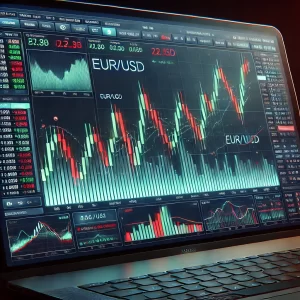When entering the forex world, you are actually stepping into a constantly changing market where currencies are traded in pairs. Your journey starts with a simple yet crucial decision: Choosing between major, minor, or exotic currency pairs. Each category has its own set of unique opportunities and challenges, and comprehending these can have a major impact on your trading strategy and outcomes.
In this article, Everest Trust analysts guide you through this selection process, allowing you to make sound decisions that are in line with your trading goals.
Understanding Currency Pairs
At the core of the foreign exchange market is the idea of currency pairs – the base currency is the first listed one whereas the quote currency is the second one. The displayed price of a pair shows how much of the quote currency is needed to purchase one unit of the base currency. For instance, in the EUR/USD pair, if the price is 1.08, it means one Euro costs 1.08 USD. These dynamic prices give traders several opportunities to bag substantial returns.
Major Currency Pairs: The Market’s Backbone
The most actively traded pairs in the forex market are known as the major currency pairs. These pairs always comprise the US dollar combined with another major currency such as the Euro, Japanese Yen, or the British pound. Here’s why beginners and seasoned traders alike often prefer major pairs:
- High Liquidity: The large trading volume at any time enables the transactions to be executed quickly.
- Low Spreads: The cost of trading is low because of the tight spreads.
- Stability: Such pairs are relatively less volatile, and they are perfect for new traders in the market.
- The majors include pairs like EUR/USD and GBP/USD.
Minor Currency Pairs: Besides The Majors
Also referred to as “cross-currency pairs”, they do not include the US dollar. In contrast, they include other major currencies against each other, such as EUR/GBP or GBP/JPY. These pairs are less liquid but enable traders to diversify their strategies beyond the more traditional USD-centric pairs.
Minor pairs can be particularly appealing because:
- Diversification: They reduce dependence on the US dollar.
- Moderate Liquidity: While less than majors, liquidity is usually sufficient for active trading.
- Unique Dynamics: Their movements are influenced by different factors than those affecting the US dollar, offering new opportunities.
Exotic Currency Pairs: High Risk, High Reward
Exotic pairs combine a major currency with a currency of a developing country, like USD/TRY (Turkish Lira) or EUR/SGD (Singapore Dollar). These pairs are the least liquid and often have wide spreads which results in higher trading costs. Nevertheless, they can be a source of great returns due to their potential for large price swings driven by economic and political events in emerging markets.
While trading exotics:
- Expect Volatility: Volatility can be severe, with the possibility for huge profits but also more risk.
- Higher Spreads: The cost of entry is higher, which may not be profitable.
- Unique Market Forces: These pairs are usually affected by the regional economic situation which makes them unstable.
How To Select The Right One For You?
The choice of the currency pair type is largely determined by your experience level, risk tolerance, and trading strategy. Here is a quick guide:
- Beginners are advised to start with major currency pairs that are stable and have plenty of analytical resources.
- Intermediate traders could also consider minor pairs, which provide a good balance between risk and opportunity while still offering enough liquidity.
- Seasoned traders who can tolerate the rsks may consider exotic pairs because of the profit potential from the large fluctuations.
Everest Trust analysts recommend that no matter which type of pair you choose, always approach trading with a clear strategy and robust risk management practices. This includes setting stop-loss orders to protect against unexpected market movements and carefully monitoring global economic news that could affect currency prices.
Conclusion
Whether you opt for majors, minors, or exotics, each category offers distinct trading experiences. As you gain experience and confidence, you can explore a broader range of pairs to diversify your trading activities and potentially increase your returns.



